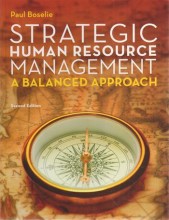Summary: Methodology
- This + 400k other summaries
- A unique study and practice tool
- Never study anything twice again
- Get the grades you hope for
- 100% sure, 100% understanding
Read the summary and the most important questions on methodology
-
1 week 1
This is a preview. There are 4 more flashcards available for chapter 1
Show more cards here -
What are the key steps of scientific research?
- Starts with an interest in or question about phenomena, situations, or behavior
- Finds out what’s already known about the topic through a literature review
- Provides its own attempt to describe or explain the phenomenon/situation/behavior
- May use various types of data -
How can research questions take different forms in scientific research?
- Research questions can be of all kinds, depending on the focus and goals of the study
- They can vary in complexity and specificity
- They serve as a guide for the research process -
What factors influence the choice of research methods in scientific research?
- The choice of research methods is usually tied to the researcher’s worldview or epistemology
- Different worldviews offer multiple ways of approaching description/explanation
- Various types of data can be used based on the chosen worldview/epistemology -
When should we believe an explanation or description in scientific research?
- Only if the research is reliable
- Only if the research is valid
- Always provisionally (a better explanation might emerge) -
What do scientists aim to achieve by having strict rules in place for academic research?
• Guarantee the quality of academic research
• Ensure credibility and trustworthiness of their work
• Maintain high standards and integrity in their research -
What is the purpose of the course that serves as an introduction to the rules of academic research for scientists?
• Familiarize students with the rules of academic research
• Provide an introduction to quality control in research
• Equip students with the necessary skills for rigorous scientific investigation -
How do scientists utilize theoretical insights in their research?
• Interpret observations through theoretical insights
• Apply theoretical frameworks to analyze data
• Connect empirical findings to established theories -
What are the components of the Model of Human Communication by Shannon & Weaver, 1949?
- Source: the initiator of content.
- Message: the communication content.
- Channel or medium: the vehicle of content.
- Receiver(s): the recipient(s) of information.
- Noise: disturbances in interaction.
- Context: relationships, situation, cultural norms. -
What are some examples of angles from which to study media content?
- Rhetoric:
- Focuses on appeals used in advertisements to persuade consumers.
- Includes Logos (logic), Ethos (character), and Pathos (emotion).
- Dramatism:
- Analyzes human communication as drama (Kenneth Burke).
- Describes domestic setting, people, and minidrama.
- Content analysis:
- Quantitative method assessing media content based on counting.
- Involves setting up categories of content and looking for explicit and observable elements.
- Critical analysis:
- Focuses on relationship between message source and recipient.
- Emphasizes implicit or unsaid aspects in communication. -
How does **Critical analysis** approach studying media content?
- Critical analysis assumes communication upholds power structures in society.
- It emphasizes the relationship between message source and recipient, looking for implicit or unsaid elements in the communication process.
- Higher grades + faster learning
- Never study anything twice
- 100% sure, 100% understanding































